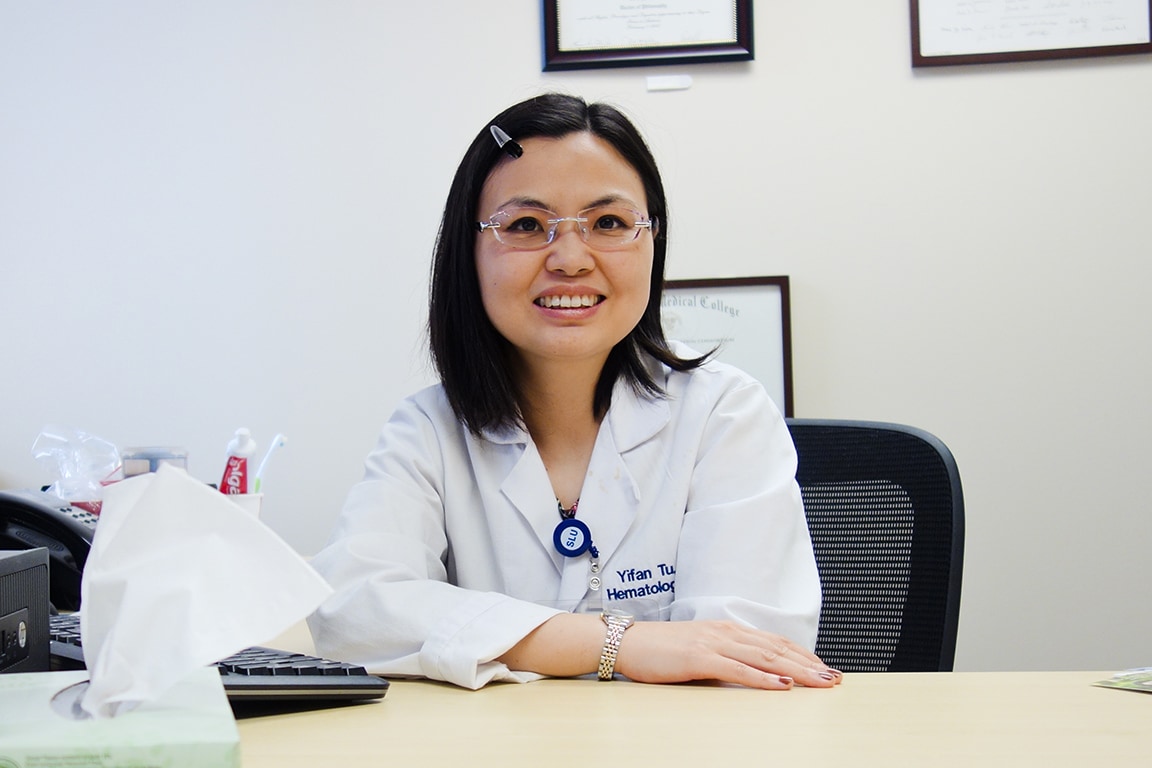SLU Researchers Find Americans Pay Highest Prices in the World for Cancer Medications
Yifan Tu, M.D., Ph.D., assistant professor in the Division of Hematology and Oncology at Saint Louis University, was the third author in a recent study titled "Global differences in cancer drug prices: A comparative analysis."
The findings were presented in June during the annual meeting of the American Society of Clinical Oncology in Chicago, Illinois.
In the study, which was led by Daniel Goldstein of Israel's Rabin Medical Center, the authors calculated monthly drug doses for 23 cancer drugs, 15 of which are available generically, and then calculated the monthly drug prices from six countries: Australia, China, India, South Africa, the United Kingdom and the United States.
The researchers obtained the pricing information from locally and nationally recognized institutions, and the cost was converted to U.S. dollars using the exchange rate on Jan. 19, 2016.
The coverage is not getting better, so if the price continues to go up and the coverage goes down, the affordability will be going down."
Yifan Tu, M.D., Ph.D.
Tu's specific role was to gather all the information related to cancer drug pricing in China. The study found that there is a wide variation in drug prices globally, with drugs most expensive in the U.S. Despite the lower prices in poorer countries, though, drugs appear to be less affordable in these countries due to lower GDP per capita.
"The drugs are more affordable in the U.S. than in China and India, but compared to developed country such as Australia and U.K., the price is less affordable," Tu said. "That's the major conclusion of this study. With the higher price in the U.S., generally the insurance companies still pay, which is why it's still affordable."
The median monthly patented drug price ranged from $1,515 in India to $8,694 in the U.S., and for generic drugs, median monthly prices ranged from $120 in South Africa to $654 in the U.S. The median monthly percentage of GDP per capita for patented drugs ranged from 71 percent in Australia to 313 percent in India, and for generic drugs from three percent in Australia to 48 percent in China.
Tu believes the study has policy implications for U.S. lawmakers and pharmaceutical companies, especially since cancer is generally very expensive to treat. She noted another longitudinal study done over 10 to 15 years showing that the prices of cancer drugs continues to rise independently of inflation.
"I think it's just further information for higher level policy-makers to think about how our future might not be so good," she said. "The coverage is not getting better, so if the price continues to go up and the coverage goes down, the affordability will be going down. I don't know why the price keeps going up. Can we do anything to stop that? Can we get a negotiation to get a discounted price? Policy-wise, we need to think about how to make the price lower and more affordable to everybody, not just to the U.S. or developed countries."
The study was limited in that it did not account for discounted drug prices that may be available, nor was it able to comparatively analyze the different health care systems in each country and how each system affects coverage differently.
Another issue at play is each country's drug approval process for new patented and generic drugs. Tu said some of the researchers involved in this analysis are planning to conduct future studies investigating these discrepancies, as well.
Tu said while she cannot solve the problems of affordability, she is interested in figuring out how to bring more international patients from poorer countries to SLU or elsewhere in the U.S. for cancer treatment.
"I know a lot of people who want to come to the U.S. and pay out of their pocket and get access to these drugs," she said. "It takes years; the process of approving a new drug is very long process. So people cannot wait that long."
If more people were able to come here for treatment, she said, it would be a win-win situation because international patients could get the drugs, and hospitals here could get the revenue.
"We just want to show our passion of - can we help with this system? Can we as doctors give a picture to society, to the pharmaceutical companies, and help the patients to afford cancer care? That's our goal."
Established in 1836, Saint Louis University School of Medicine has the distinction of awarding the first medical degree west of the Mississippi River. The school educates physicians and biomedical scientists, conducts medical research, and provides health care on a local, national and international level. Research at the school seeks new cures and treatments in five key areas: cancer, liver disease, heart/lung disease, aging and brain disease, and infectious diseases.


















